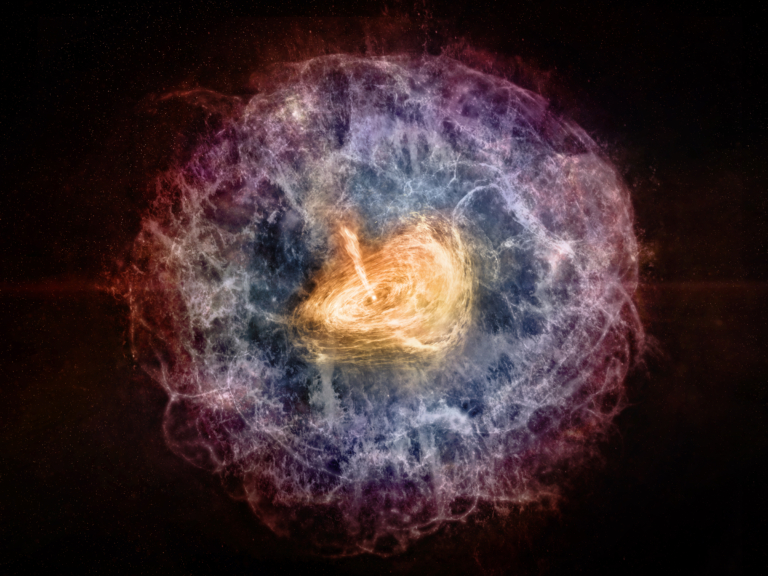NRAO: Astronomers Find Evidence for Most Powerful Pulsar in Distant Galaxy
Posted: Sat Jun 25, 2022 10:17 pm
Astronomers Find Evidence for Most Powerful Pulsar in Distant Galaxy
National Radio Astronomy Observatory | 2022 Jun 15
National Radio Astronomy Observatory | 2022 Jun 15
Astronomers analyzing data from the VLA Sky Survey (VLASS) have discovered one of the youngest known neutron stars — the superdense remnant of a massive star that exploded as a supernova. Images from the National Science Foundation’s Karl G. Jansky Very Large Array (VLA) indicate that bright radio emission powered by the spinning pulsar’s magnetic field has only recently emerged from behind a dense shell of debris from the supernova explosion.
- As the shell of explosion debris from the supernova expands over a few decades, it becomes less dense and eventually becomes thin enough that radio waves from inside can escape. This allowed observations by the VLA Sky Survey to detect bright radio emission created as the rapidly spinning neutron star's powerful magnetic field sweeps through the surrounding space, accelerating charged particles. This phenomenon is called a pulsar wind nebula. Credit: Melissa Weiss, NRAO/AUI/NSF
The object, called VT 1137-0337, is in a dwarf galaxy 395 million light-years from Earth. It first appeared in a VLASS image made in January of 2018. It did not appear in an image of the same region made by the VLA’s FIRST Survey in 1998. It continued to appear in later VLASS observations in 2018, 2019, 2020, and 2022.
“What we’re most likely seeing is a pulsar wind nebula,” said Dillon Dong ... A pulsar wind nebula is created when the powerful magnetic field of a rapidly spinning neutron star accelerates surrounding charged particles to nearly the speed of light.
“Based on its characteristics, this is a very young pulsar — possibly as young as only 14 years, but no older than 60 to 80 years,” said Gregg Hallinan, Dong’s Ph.D advisor at Caltech. ...
